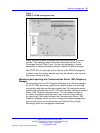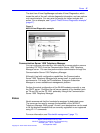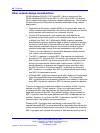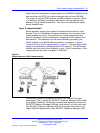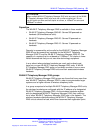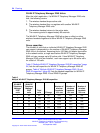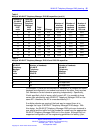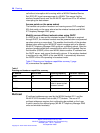
Other network design considerations 51
Nortel does not recommend a closed system for VoWLAN installations that
use more than one SSID, including converged data and voice WLANs.
The reason is that the SSID serves a valuable purpose in roaming. When
it is hidden by not being included in the beacon, roaming devices must
attempt to try all closed system APs. This result can dramatically impact
device handoff times.
Layer 3 implementation
Where possible, simplify the number of subnets that are used for client
devices. Even in a Distributed Campus architecture, you can have a few
central subnets for clients. As a general rule, Nortel recommends that
wired or wireless IP phones be placed in a separate VLAN (subnet) from
data devices. This placement can be accomplished by providing one
VLAN (subnet) for all WLAN telephony devices, as shown in Figure 9
"Single telephony VLAN implementation" (page 51). The data client VLAN
design is an abstraction (the best practice is to simplify). The WLAN data
network can have many client subnets, or one— that is unimportant in this
context because the focus is support of VoWLAN.
Figure 9
Single telephony VLAN implementation
Consolidating VoWLAN handsets into one VLAN (subnet) has a few
advantages. First, it allows the WLAN IP Telephony Manager 2245 design
to be greatly simplified. Instead of purchasing and deploying at least one
WLAN IP Telephony Manager 2245 per voice subnet, you can now install
one WLAN IP Telephony Manager 2245 for the single voice subnet. For
larger VoWLAN deployments, more WLAN IP Telephony Manager 2245
Nortel Communication Server 1000
WLAN IP Telephony Installation and Commissioning
NN43001-504 03.04 Standard
23 September 2008
Copyright © 2004–2008 Nortel Networks
.





